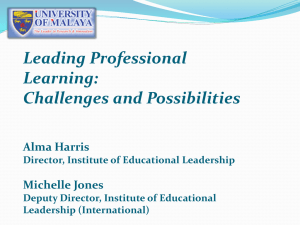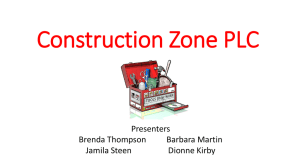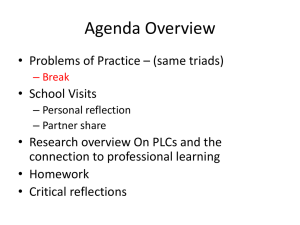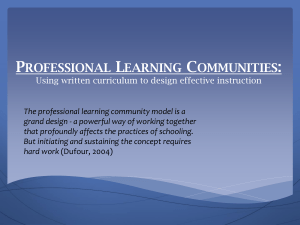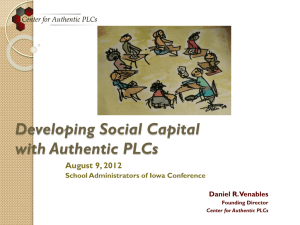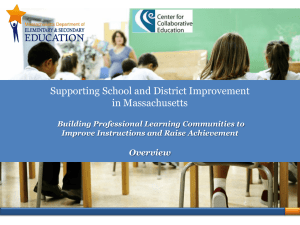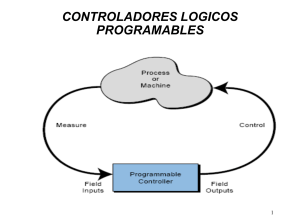School Effectiveness Framework The next phase
advertisement
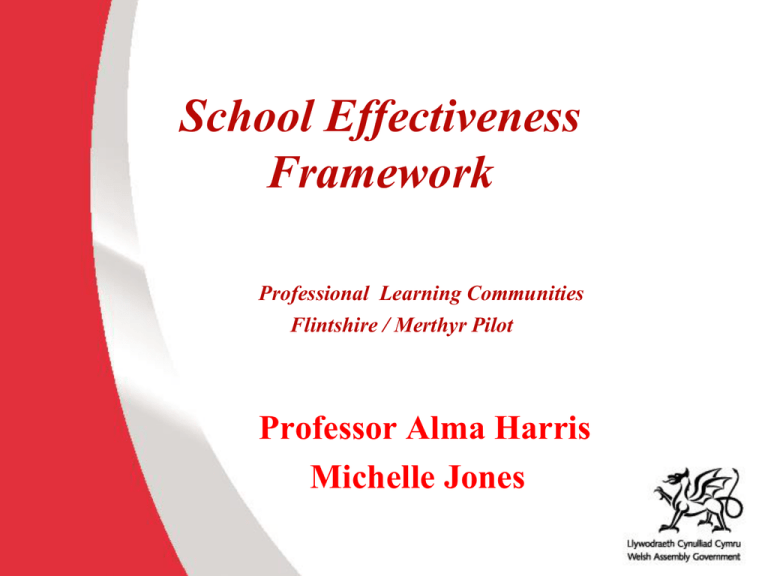
School Effectiveness Framework Professional Learning Communities Flintshire / Merthyr Pilot Professor Alma Harris Michelle Jones The Challenge (SEF 2008) To transform the education system so that we ensure success for each student in each setting (Harris, 2008) But how do we transform our school system in Wales? Page 6 Tri-Level Reform in Wales Limitations of Reform Reforms that do not take account of what happens in the classroom have a similar effect to that of a storm on the ocean – the surface is agitated and turbulent, while the ocean floor is calm and serene (if a bit murky). Policy churns dramatically, creating the appearance of major changes…while deep below the surface, life goes on largely uninterrupted.” (Cuban, L. How teachers taught: Constancy and Change in American classrooms) The most effective school improvement programmes ... • Focus on learning outcomes • Concentrate on the learning level and the instructional behaviours and practices of teachers • Focus on collaborative patterns of staff development that enable teachers to enquire into practice in order to improve learning outcomes How the Best School Systems Come out on Top (Mckinsey2007) • The only way to improve outcomes is to improve instruction • In order to improve instruction schools need to find a way of changing what goes on in the classroom Wales should learn from the best systems around the world (Barber, 2010) Standards and Accountability Human Capital Structure and Organisation Globally-benchmarked standards Recruit great people and train them well Effective, enabling central department and agencies Good, transparent data and accountability Continuous improvement of pedagogical skills and knowledge Capacity to manage change and engage communities at every level Every child on the agenda always in order to challenge inequality Great leadership at school level Operational responsibility and budgets significantly devolved to school level Fullan (2010) • The evidence is clear. PLCs, well implemented, produce learning results for students...in schools and in networks of schools or whole local authorities who use PLCs across their schools. • The reason is also clear ...PLCs develop the capacity of teachers to improve teaching practices that get results which means that PLCs can contribute to system transformation in Wales Evidence • • • • • • Professional learning communities have a positive impact on student achievement A professional learning community enables teachers to engage is collaborative enquiry and change within their own schools initially and across schools subsequently A PLC is a powerful vehicle for changing teachers’ behaviour and improving student learning outcomes but only when it is focused on the improvement of learning rather than the improvement of teaching Teachers who are part of a professional learning community tend to be more effective in the classroom and achieve better student outcomes Teacher enquiry is at the heart of effective professional learning communities, it is a key driver in improving classroom practice Professional learning communities improve teachers’ professional learning and secure improved school performance, irrespective of the school context and its socio-economic profile Professional Learning Communities within, between and across Schools (SEF, 2008) High performing schools help teachers improve instruction by learning from each other. ‘How the world’s best -performing school systems came out on top.’ McKinsey 2007 What is a PLC? Harris and Jones, 2010 Professional learning communities are where teachers participate in decision making, have a sense of purpose, engage in collaborative work and accept joint responsibility for the outcomes of their work. Empowering teachers in this way and providing them with opportunities to lead is based on the simple but powerful idea that if schools are to meet learner needs, they must provide opportunities for teachers to innovate, develop and learn together. PLCs • Professional Learning Communities allow teachers to focus their professional development efforts on improving learning outcomes • They allow teachers to work together within schools first and then between and across schools. • Participants learn more through active construction of knowledge rather than through passive receipt of information 2 Key Principles (Harris and Jones, 2009) Enquiry Collaboration 15 Characteristics of a PLC (Harris and Jones, 2009) Distributed/C Leadership Focus on Learner Needs Attention to Instructional Core Enquiry driven- outcomes lead to change in practice PLC Building blocks 17 Leadership • Distributed • Collaborative Enquiry • Distributed • Collaborative Knowledge Generation • Distributed • Collaborative Distributed leadership (Harris, 2007) • is fundamentally about connecting leadership practice more closely with teaching and learning practice. Distributed Leadership: 3 Levels (Harris, 2008) • Superficial level – delegation • Subterranean level-new teams, new roles and responsibilities • Deep level- cultural & capacity building • i.e. the way of working around here Implementing SEF through PLCs (Harris and Jones, 2009) • Inter-dependent practice • Shared responsibility and accountability Building and Sustaining Professional Learning Communities Broad Based Leadership • Distributed and Classroom Focused • Professional • Pupil Relentless Focus on Learning 7 phases of establishing a PLC 1. Identifying the group 2.Agreeing a common focus (Harris and Jones, 2009) 7. Sharing Outcomes – within and between schools 6. Refining 3. Action Enquiry 4.Innovation 5.Trialing Feedback & Change Establish Enquire Extend Specific group Many groups, eg Lesson Study Heads Between Schools Across Schools Across LAs Teachers PLCs within schools Support staff Pupils SEF 2008 Headteachers Teachers Across Schools Between Schools Across LAs PLCs within schools Governors Support staff Pupils PLC Guidance Material • • • • • • • • • • • • • Part 1 What is a Professional Learning Community? The School as a Learning Community How do you create a PLC? Qualities / characteristics of a PLC PLC’s and the SEP Characteristics of a PLC facilitator/leader Role of the PLC facilitator Case studies Part 2 ---------------------------------------------------------------------Potential opportunities for CPD including range of PLC activities. Links to Performance Management Evaluating the impact of professional learning and the PLC CPD overview chart for all staff at different stages in their careers and highlight links to PLCs. Link to the ‘new national standards’ review.
